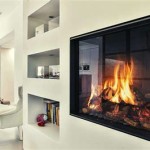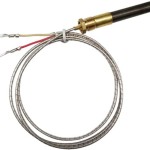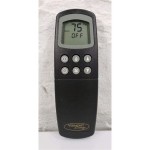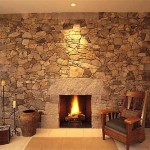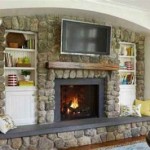Optimus Inferred Fireplace Heater: A Detailed Examination
The Optimus Infrared Fireplace Heater represents a segment of supplementary heating solutions utilizing infrared radiation to provide warmth. These units are designed to mimic the aesthetic of a traditional fireplace while employing a potentially more energy-efficient heating method compared to conventional space heaters like those based on convection. This article aims to provide a detailed examination of the Optimus Infrared Fireplace Heater, focusing on its technology, design, operational characteristics, and common applications.
Infrared heating, the core technology behind the Optimus unit, works by emitting electromagnetic radiation within the infrared spectrum. This radiation directly heats objects and individuals within its range, instead of primarily heating the air as in convection heating. This method can deliver a sensation of warmth more quickly than convection heaters. The focus on direct heating means that energy isn’t wasted heating unoccupied air space, possibly making it a cost-effective method for localized heating.
The aesthetic appeal of a fireplace is a significant selling point for these heaters. Optimus designs often incorporate visual elements, such as simulated flames and glowing embers, to create an ambience reminiscent of a traditional wood-burning or gas fireplace. This feature can enhance the visual comfort and psychological warmth of a room, even when the heating function is not actively engaged.
Key Point 1: Technology and Functionality
The heating mechanism of the Optimus Infrared Fireplace Heater revolves around the use of infrared heating elements. These elements, typically quartz or ceramic, are heated electrically, causing them to emit infrared radiation. This radiation is the primary source of heat, and it is directed outwards into the designated space. The efficiency of this process depends on the type of infrared element used, the design of the reflector, and the overall insulation and construction of the heater unit.
Most Optimus models offer adjustable thermostat settings, enabling users to control the desired temperature output. This feature allows for a degree of customized comfort, preventing overheating and conserving energy when the desired temperature is reached. The thermostat regulates the power supplied to the heating elements, cycling them on and off to maintain a consistent temperature level. Furthermore, some models are equipped with multiple heat settings, providing greater flexibility in managing heat output according to the ambient temperature and personal preferences.
In addition to the heating function, the visual flame effect is often a separate, independently controlled feature. This allows users to enjoy the ambience of the simulated flames without activating the heating elements, particularly during warmer months. The flame effect is typically achieved through a combination of lighting and reflective elements, creating a dynamic visual display that mimics the appearance of a real fire. The quality of the flame effect varies between models, with some offering more realistic and visually appealing simulations than others.
Safety features are a crucial consideration in any electric heater. Optimus Infrared Fireplace Heaters often incorporate safety mechanisms such as overheat protection and tip-over switches. Overheat protection automatically shuts off the heater if it detects an excessively high internal temperature, preventing potential fire hazards. A tip-over switch cuts off power to the unit if it is accidentally knocked over, further mitigating the risk of fire or damage. These safety features are essential for responsible and safe operation of the heater, particularly in households with children or pets.
The power consumption of an Optimus Infrared Fireplace Heater is a significant factor in determining its operating costs. These heaters typically range in power from 1000 to 1500 watts. The actual energy consumption depends on the heat setting selected and the duration of use. Understanding the power consumption is crucial for estimating the running costs and comparing the energy efficiency of different heating options. To accurately estimate the running costs, one can refer to the heater’s energy consumption rating typically found on the product’s packaging and/or product manual. This rating can be used in conjunction with regional electricity rates to determine the cost of each hour of usage.
Key Point 2: Design and Aesthetics
The design of the Optimus Infrared Fireplace Heater caters to aesthetic preferences and practical considerations. These heaters frequently mimic the traditional appearance of fireplaces, utilizing wooden or metal mantels, simulated brickwork, and decorative elements. The goal is to create a visual focal point within a room that complements the existing décor. The design ranges from classic and traditional to modern and minimalist, offering a variety of options to suit different tastes.
The construction materials used in the heater’s housing influence its durability and appearance. Common materials include MDF (Medium-Density Fiberboard), metal, and plastic. MDF is often used for the mantel and surrounding structures, providing a cost-effective and easily moldable material. Metal components contribute to the structural integrity and often feature in the firebox area. Plastic is used for various decorative elements and internal components. The quality of these materials impacts the overall longevity and resistance to wear and tear.
The size and dimensions of the heater influence its suitability for different room sizes and placements. Optimus offers models in various sizes, from compact units suitable for small rooms to larger, more substantial units designed for larger living spaces. Considerations such as available floor space, proximity to furniture, and visual impact should be taken into account when selecting the appropriate size. Additionally, the weight of the heater might be a factor when considering portability and placement, particularly if moving the heater between rooms is desired.
The simulated flame effect is a central visual element of the design. The realism and visual appeal of the flame effect are crucial factors for many consumers. Advanced models utilize LED lighting and intricate reflective surfaces to create a more dynamic and convincing flame simulation. The brightness and intensity of the flame effect are often adjustable, allowing users to customize the ambience according to their preferences. Some models also incorporate additional visual features, such as adjustable ember bed lighting and flickering effects, to enhance the realism.
Control panels and user interfaces vary between models but generally include buttons or dials for adjusting the temperature, heat settings, and flame effect. Some models feature remote controls for added convenience, allowing users to operate the heater from a distance. The ease of use and intuitiveness of the controls are important considerations, particularly for individuals with limited dexterity or technological familiarity. Clear and legible markings on the control panel are essential for user-friendly operation.
Key Point 3: Applications and Considerations
Optimus Infrared Fireplace Heaters are primarily intended for supplementary or localized heating. They are well-suited for heating specific areas of a room, such as a living room or bedroom, rather than heating an entire house. This makes them suitable for reducing energy consumption by only heating the occupied areas. They can supplement central heating systems during colder months, or provide primary heating in smaller spaces like apartments.
Compared to traditional space heaters, infrared heaters may offer certain advantages in terms of heating efficiency and comfort. Infrared heating directly heats objects and individuals, providing a more immediate sense of warmth and potentially reducing energy waste associated with heating unoccupied air. However, the effectiveness of infrared heating is limited by its directional nature. Objects or individuals outside the direct range of the radiation may not receive as much heat. Conventional heaters often distribute the heat more evenly throughout a space but may take longer to achieve the desired temperature.
The safety of infrared heaters is a key concern, especially in households with children or pets. It's critical to adhere to all manufacturer-provided safety guidelines to mitigate potential hazards. This includes maintaining sufficient clearances around the heater, preventing flammable materials from coming into contact with the unit, and ensuring proper grounding of the electrical system. Using the heater on a level and stable surface is necessary to minimize the risk of tip-over accidents. Adherence to safety precautions is paramount for preventing fire hazards or other accidents.
The maintenance requirements for Optimus Infrared Fireplace Heaters are generally minimal. Regular cleaning of the heater's exterior is recommended to prevent dust accumulation and maintain its appearance. The heating elements and reflective surfaces should be periodically inspected to ensure they are clean and free from debris. Accumulated dust reduces heating efficiencies. Some models may have replaceable filters that require periodic cleaning or replacement. Consult the manufacturer's instructions for specific maintenance recommendations.
The warranty and customer support offered by Optimus are important considerations when purchasing an infrared fireplace heater. A comprehensive warranty provides assurance against defects in materials or workmanship. Access to reliable customer support enables consumers to address any issues or concerns that may arise during the heater's lifespan. Reviewing the warranty terms and customer support options before making a purchase is essential for ensuring a positive ownership experience. Potential buyers may also consult existing customer reviews and ratings to get a better understanding of the product's reliability and the manufacturer's customer service quality.
The choice of an Optimus Infrared Fireplace Heater, or any heating solution, warrants consideration of individual needs, room specifications, safety standards, aesthetic preferences, and power consumption estimates. A careful evaluation of these factors greatly contributes to a well-informed decision.

Optimus Fireplace Infrared Heater With Remote And Led Display 10 78 X 22 1116 Office Depot

Bwood 600 Watt Portable Space Heater 13 14 X 3 Black Office Depot

Optimus 750 Watt 1500 Electric Heater With Flame Effect 98588571m The Home Depot

Optimus Fireplace Infrared Heater With Remote And Led Display 10 78 X 22 1116 Office Depot

Optimus 1320 Watt Electric Flame Effect Mini Infrared Fireplace Heater 986109614m The Home Depot

Optimus 18 4 In W Black Infrared Quartz Electric Fireplace The Fireplaces Department At Com

Lifesmart 1000 Watt Tabletop Infrared Fireplace Space Heater With Flame Effect Ht1287b The Home Depot

Selectric 15 In W Black Infrared Quartz Electric Fireplace The Fireplaces Department At Com

Lifeplus 14 In Electric Fireplace With 3d Realistic Flame Effect And Overheating Safety Protection Hdye0033 The Home Depot

Forclover 15 In W Black Led Electric Fireplace The Fireplaces Department At Com
Related Posts

